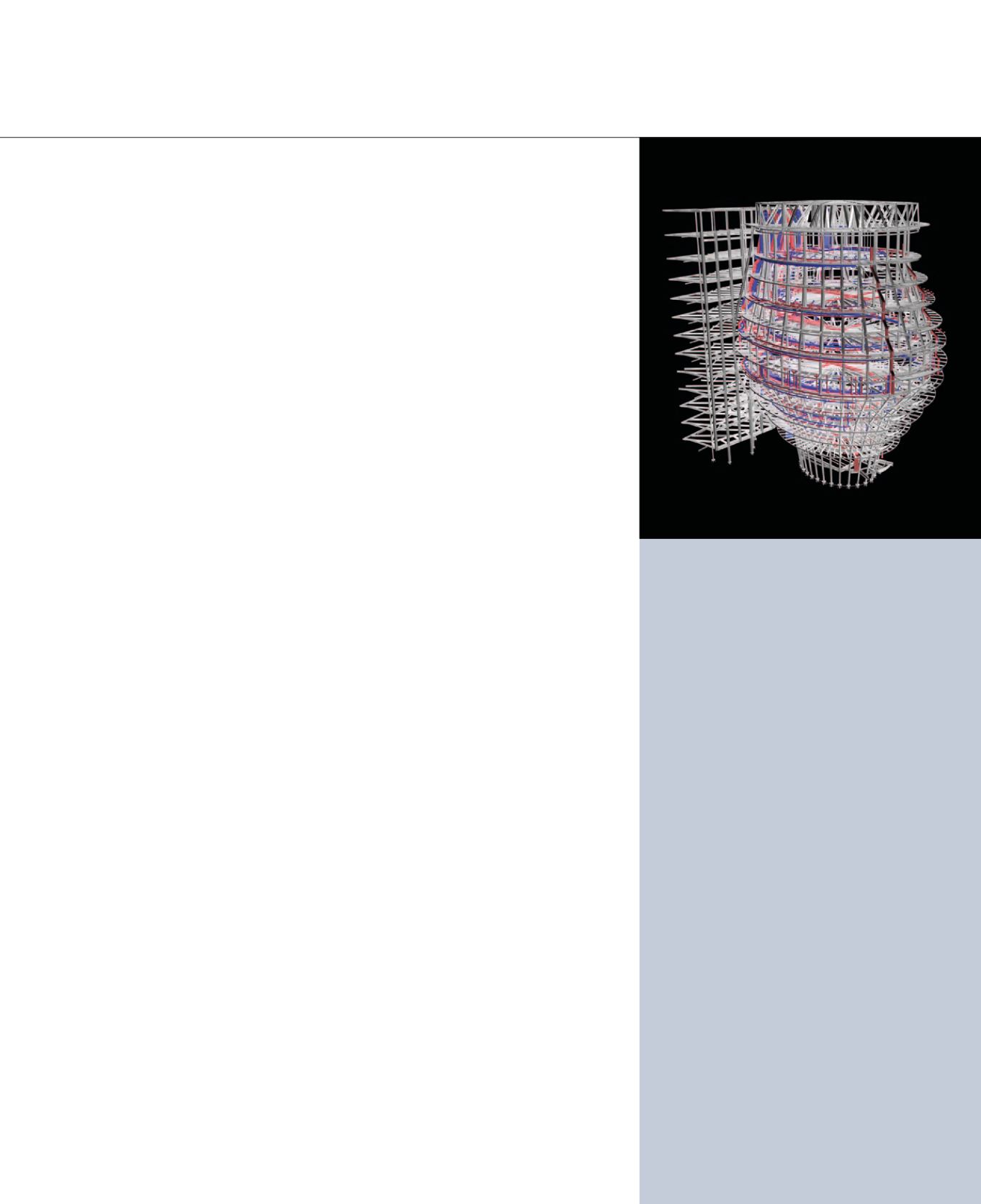
178
EUROPA
arteries remain that pulsate oxygen sucked up by this tall enclosed building, even
if densely populated. It is an expert drawing: what it endeavours to show, once
constructed, will only be seen on screen, accessible through encoded segments
or from a synopsis. Contrary to the hypocritical computer-generated images, it
does not show off or flatters appearances, it represents the invisible outlines of an
architecture of air.
In this physical aspect of the building, the most refined solutions adapt to the
most primitive needs (breathing, shelter; safety). Philippe Samyn often reminds us
that a building is no machine, that it is fundamentally static. And yet architecture
integrates the dynamics of air, water… and, in the event of a blaze, fire. Air humid-
ity is controlled, temperature variations adjusted. Rainwater is used in sanitary
systems; thunderstormwater collected in tanks. The sprinkler system is on stand-
by mode in the ceilings. It is striking to see to what extent interest in the structure,
in its static system, is coupled with attention for the building’s behaviour, for its
interaction with the ambient physical environment. Engineering invents or uses
processes that alter the relationship with light, heat and cold, and air quality. The
sophistication of processes generates definitions of Modernism (space; light),
which are naive if not rough. The buildings have ceased to rise up like marble
monuments facing unchanging landscapes: they are neither Greek nor Roman;
they are not
machines to live in
either; they are both works of art and artefacts
aimed at understanding living environments. The quality of their ambiances de-
pends on their regulating, homeothermal ability; their behaviour over time and
their durability, of their balanced relationship with fluctuating conditions. Archi-
tecture discreetly negotiates is relationships with duration, its potentially chang-
ing affectations, its maintenance conditions, its possible destruction. We like it
to be “durable”… It is both artificial and alive, i.e., that can be dismantled and is
mortal: beauty of this mechanical heart within.
The creation at the top of the building of a pergola aimed at supporting a blanket
of photovoltaic cells posed the question of the means to accentuate or limit the
impression created by the composite nature of the new complex. Did the pergola
have to cover the entire roof in order to allow for a unified vision of the build-
ing? Or else did the listed façade have to keep its initial crown and only cover the
new sections? The former option was chosen, it endows the building with a unity
of size if not of profile; it gives it greater energy efficiency. In reality, the original
building was already topped by a pergola, which was chic and snobby, and was
used for dances during the
Belle Époque
. Today the pergola carries the finery of
environmental elegance.
Take Baroque architecture. There isn’t even
a need to give examples as it is the constant
of Baroque, in Guarini, Borromini, Bernini. At
the end of the day, without door or window,
what does it evoke in you? It is obviously
the ideal of what? I would say that it is the
ideal of the cell as well as of the sacristy,
the chapel, the theatre, that is to say of all
places where what is to be seen, either is
aimed at the mind, the monk’s cell, or is the
inside of the room, the theatre (…) What one
can expect from Baroque, is the creation of
the room without doors or windows as an
architectural ideal.
Course by
Gilles Deleuze
,
dated 20 January 1987,
University of Vincennes/Saint-Denis,
Combination of 3D models of the aeraulic system and
metal framework of the lantern and open spaces, 2012.
THE AERAULIC CORE


